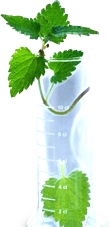



Author(s): Aswathy JM and Murugan K*
Begonia species forms a highly variable and complex group and are distinguished from each other solely on the size and shape of leaves with reference to recent taxonomic revision. They share similar floral morphology with caudex or swollen stem base. Considerable variation among populations was seen with respect to the size, margin and lobbing of leaves. An attempt was made to compare DNA polymorphism, anthocyanin content and morphological traits among five cultivars of three Begonia species. The cultivars of B. rex and B. heracleifolia showed more or less similar morphometric characters but differ significantly from B. malabarica. Begonia rex ‘baby rainbow’ and ‘black beauty’ showed remarkable anthocyanin content (69.6 and 70.6 mg/g FW respectively) compared to others. Genetic diversity among the cultivars of the species was attempted by DNA finger printing using 15 primers. Optimal quantity of DNA was extracted from the cultivars of young leaves by CTAB method. The quality of DNA was checked by Agarose gel electrophoresis. The isolated DNA was quantified at 260 nm and 280 nm and was subjected to PCR amplification. 106 unambiguous, readable and reproducible RAPD bands were produced using the selected primers. The number of bands obtained with the sizes ranging from 250 to 1500 bp. All the bands were polymorphic i.e., 100 %. Similarly, the cultivars can be identified by unique bands with specific primers. A dendrogram was also constructed using the percentage of genetic distance grouped them in to different clades. Further, the present study also shows correlation between DNA polymorphism and anthocyanin content among the cultivars.